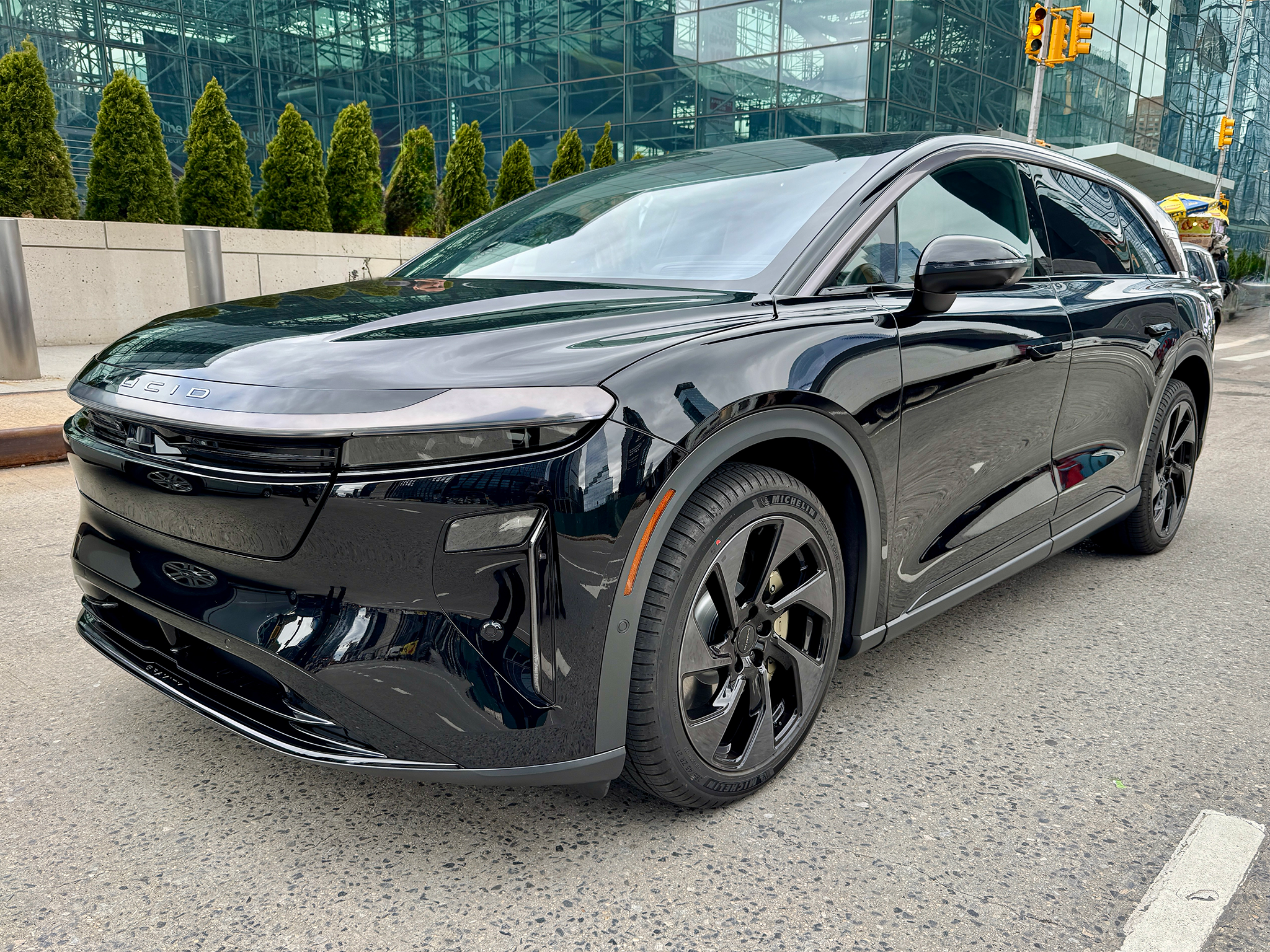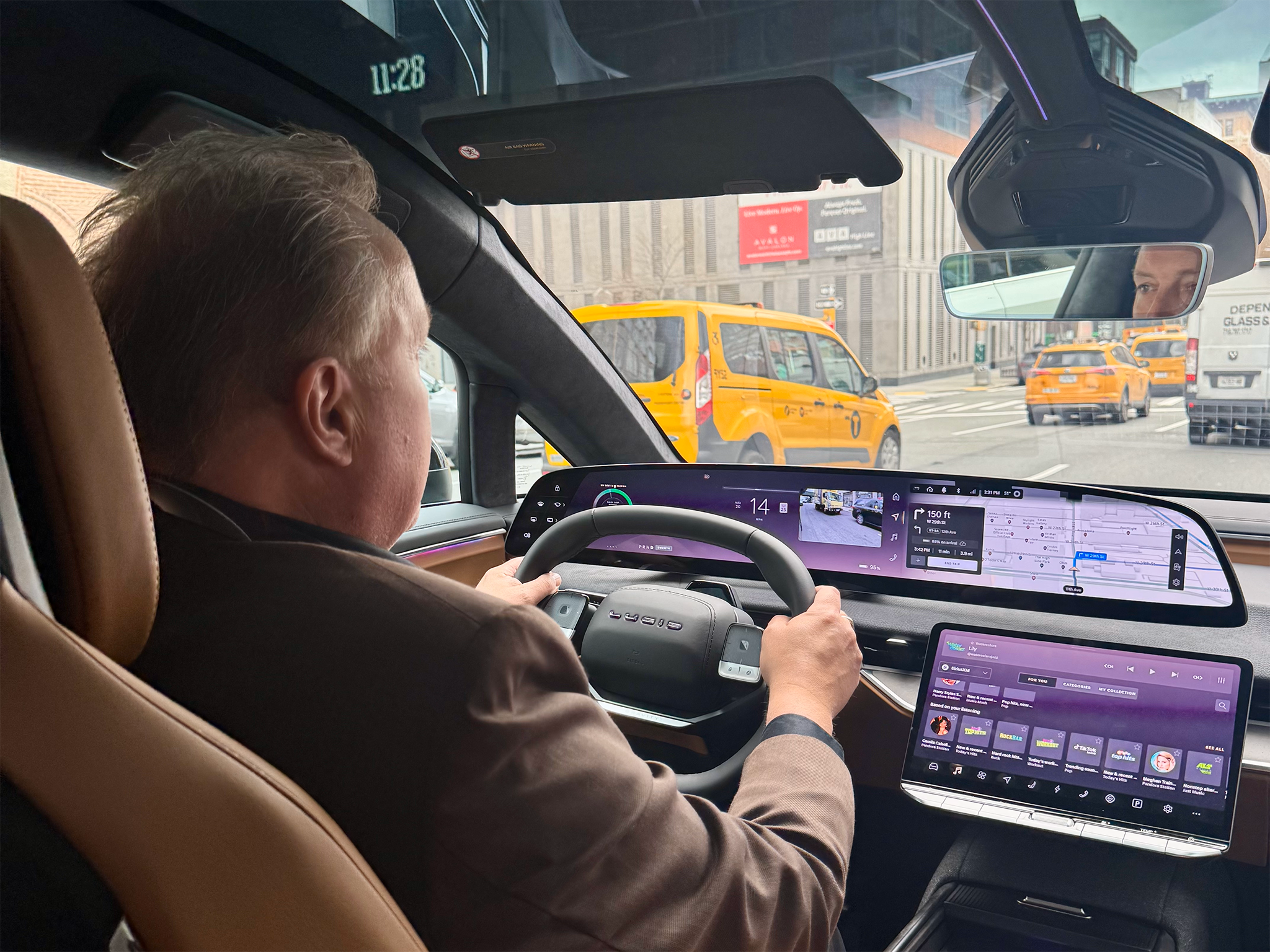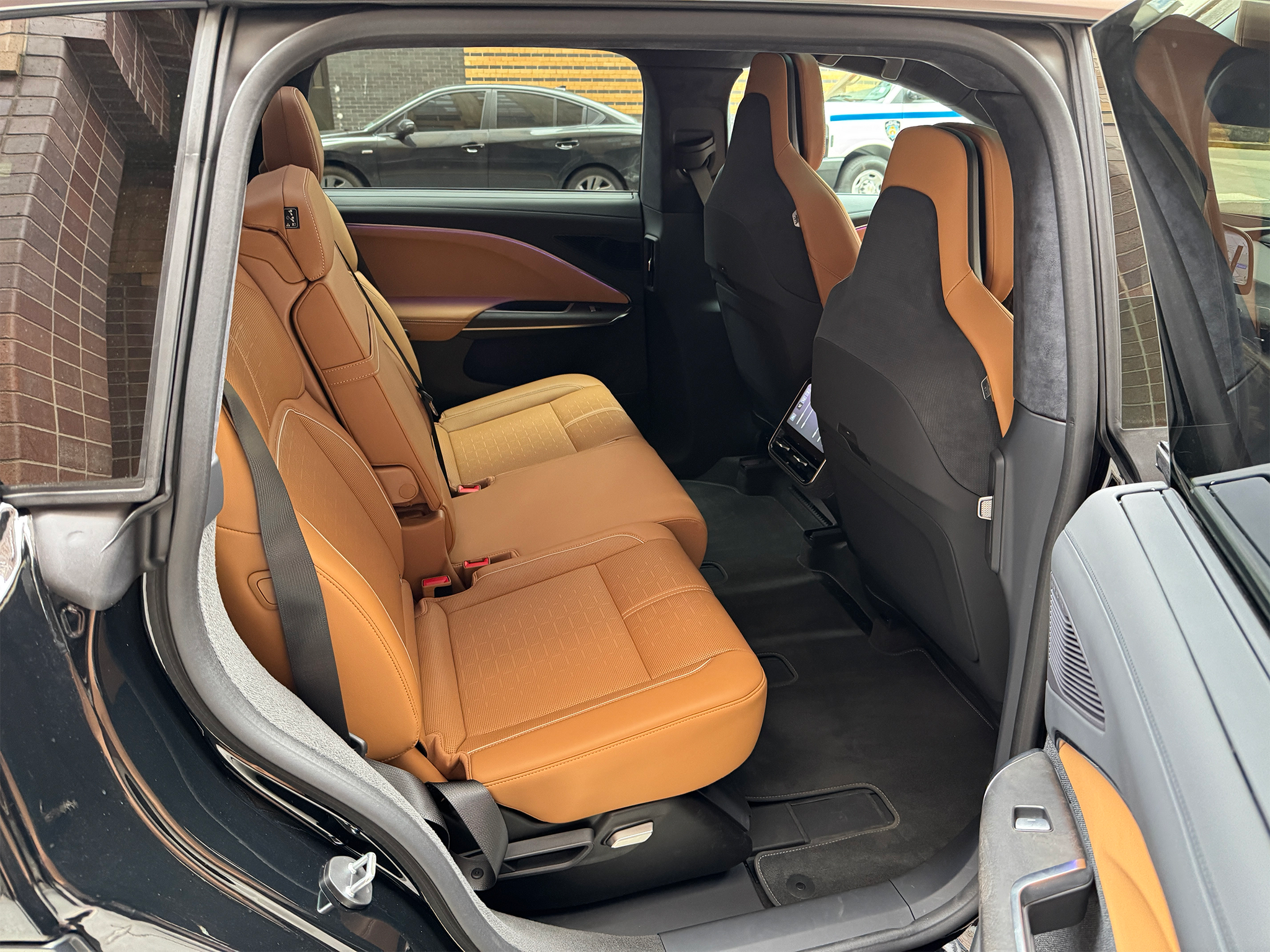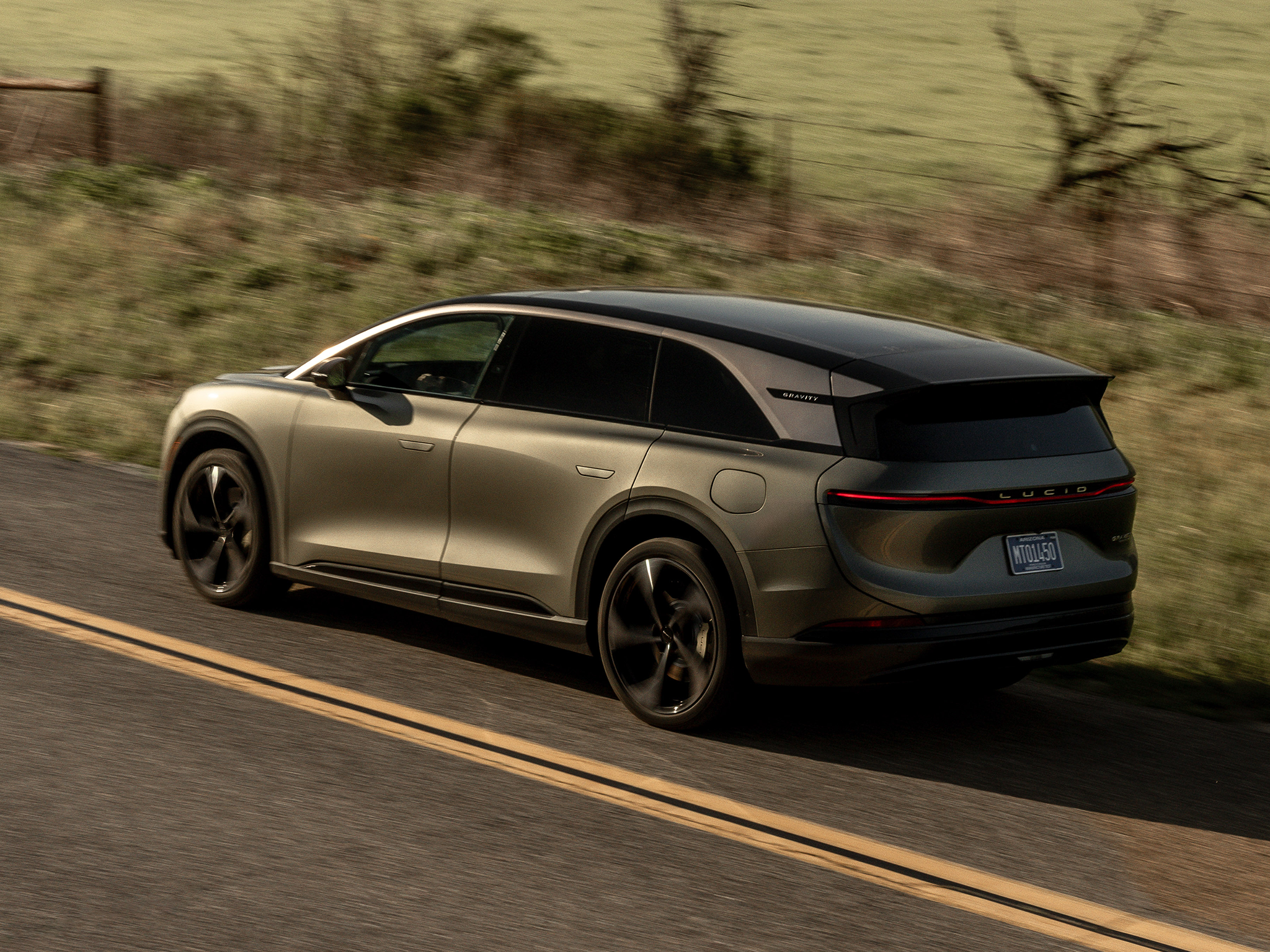ARTICLE AD BOX
There’s a fair bit of Britishness around Lucid, not least because the company was set up and run until recently by British former Tesla engineer Peter Rawlinson. Rawlinson’s obsession was with the efficiency of Lucid’s drivetrain, and he even struck a deal with Aston Martin to use Lucid tech in the British brand’s upcoming EVs.
The Lucid Air was the brand’s first car to launch. A big saloon rival to the Tesla Model S, it scooped the World Luxury Car Award in 2023.
Despite reported financial troubles, Lucid continues to grow its sales and this latest model, the seven-seat Gravity, is a stunning car. It sits lower and looks sleeker than other seven-seat SUVs, let alone electric ones.
It combines strong build quality with a decent drive, a comfortable ride and plenty of room for seven people in all three rows. Everyone – including those in the front – get a great view out and up thanks to the panoramic roof, which blends into a windscreen that flows over the top of the driver’s head. It gave a great view of the New York skyline on our test drive.
The Lucid Gravity features strong tech on board too. There’s a curved 34in display with 6K OLED tech that seems to float just above the dashboard, with an augmented reality head-up display. Underneath is a big 120kWh battery on a 926V platform, meaning the Gravity can charge at up to 400kW if you can find a fast enough charger. That equates to adding 200 miles of range in under 11 minutes.
How we tested
Lucid let us take the Gravity for a quick test drive at the New York Auto Show. We did the usual checks on usability, tech and the passenger experience in the back seats, and had a drive around Manhattan’s quick and not-so-quick roads.

Independent rating: 9/10
- Pros: Loads of space, blends tech with usability, efficiency, great roof
- Cons: No plans for the UK… yet
Lucid Gravity specs
- Price range: $94,900 (£70,800)
- Battery size: 120kWh
- Maximum claimed range: 450 miles
- Miles per kWh: TBC
- Maximum charging rate: 400kW
Battery, range, charging, performance and drive
Lucid doesn’t officially quote battery size – something it obviously learnt from Tesla – but we understand the Gravity Grand Touring model that’s currently available packs a whopping 120kWh battery pack, with a claimed maximum range on US tests of 450 miles. A cheaper Touring model comes later this year with a smaller battery.
What we do know is that Lucid’s advanced tech includes a 925V platform that helps with super-fast charging. Assuming you can find a suitably fast charger, the Gravity will take power at 400kW. Combined with Lucid’s claim that the car can sustain fast charging for longer, that means 200 miles could be added in under 11 minutes. The company also says it can charge at a sustained speed of up to 225kW on Tesla’s fastest V3 Superchargers.
In our short test drive, we got a chance to test Lucid’s acceleration claims. The Gravity certainly feels as quick as its 0-60mph time of 3.4 seconds suggests – a bizarre sensation in a seven-seat SUV. Throttle response is suitably sharp, but throttle modulation is good and you can drive the Gravity in a relaxed manner, which pleases passengers. One-pedal driving is intuitive, too.
We were also impressed by the ride quality over New York’s notoriously bumpy streets. The Gravity, with its air suspension, rode the bumps well and is unlikely to fluster passengers too much. Although this SUV is no sports car, it does a reasonable impression of one with beefy-feeling steering that balances reaction times and feedback without feeling overly responsive. Rear-wheel steering helps manoeuvring this large 5,029mm SUV.

Interior, practicality and boot space
Not only is the build quality of the Lucid Gravity impressive, the space on offer is too. Whether you’re in the first, second or third rows there’s plenty of space, helped by the wonderful panoramic roof that seems to merge seamlessly with the extended windscreen flowing back over the driver’s head.
The flat floor helps to boost the space on offer, especially in row two where the seats slide back and forth (powered, obviously) to provide limo-like space. Clever fold-out tables on the back of the front seats mean you can actually work without having to perch your laptop on your lap.
Moving the middle seats forward at the touch of a lever makes getting access to the third row about as easy as possible, helped by long, wide-opening rear doors. In the third row there’s good head and leg space.
Boot space is pretty impressive, too. All five rear seats fold flat to give a maximum 3,143 litres of total space. Even with all seven seats in use, there’s still 594 litres of room. You can even sit in the frunk with a padded seat that folds out from the floor.
There’s plenty of sustainable materials available including sustainable woods and vegan leather – which looks and feels pretty much the like the real thing. It’s a tasteful, well-judged interior that looks and feels premium, and is comfortable, too. Even the squared-off steering wheel, set low for a better view of the screen, feels great to use. Unlike on the latest Tesla models, there are stalks behind the wheel for indicators, wipers and gear selection.

Technology, stereo and infotainment
The star of the show is the 34in, 6K OLED curved screen, which combines the driver display with touchscreen controls. But there’s also a second touchscreen lower down and just above the centre console with fast keys for the ventilation.
Just in case the big screen isn’t enough for you, there’s also a high-definition head-up display with augmented reality to help you with navigation. There’s wireless Apple CarPlay, but Android Auto users will have to wait a little longer.
Sticking to the sleepy naming convention, Lucid calls its autonomous driving tech DreamDrive. It uses radar, lidar and cameras to manage situation awareness, with a display showing you all of the road (and path) users around you. Of course, the car will drive itself in lane and change lanes, with over the air updates keeping the software up to date. Numerous sensors keep watch when you’re not in the car, too.
The in-house audio system sounded good when we turned it on briefly. There are 22 speakers and Dolby Atmos for a full surround sound experience.
Prices and running costs
Last time we pushed Lucid on right-hand drive production we were told the company was keen to do it but had other priorities. We sincerely hope those priorities ease soon as the Gravity (and the Lucid Air for that matter) are both brilliant cars that would find favour with UK luxury EV buyers.
In the US the Grand Touring model we drove costs $94,900. We’d expect that to translate to around £90,000 rather than the current conversion of £70,800, which would have made the Gravity an absolute steal, although tariffs might come into play, too.
A Touring model is expected to land in the US later in the year. Order books are now open for that model with a price of $79,900 (£59,800).
What’s just as impressive as those prices is the efficiency on offer, with a claimed 450 mile range for the Grand Touring Gravity.

Lucid Gravity rivals
FAQs
How long does it take to charge?
If you can find a fast enough charger, the Lucid Gravity will charge at up to 400kW, being able to add 200 miles in just 11 minutes.
How much does it cost - is it worth it?
The Lucid Gravity is excellent value in the US with the Touring version coming later in 2025 for $79,900 (£59,800). Even the bigger battery Grand Touring is good value at $94,900 (£70,800)
Does Lucid replace batteries for free?
Lucid offers an eight-year warranty that covers the battery for up to 100,000 miles when it should retain at least 70 per cent of its capacity.
The verdict: Lucid Gravity
Lucid says it has other priorities before making right-hand drive cars, but I reckon they’re missing a trick. Both the Air and now the Gravity are stunning cars – great to drive and easy to live with – that blend luxury with usability. They’d go down a storm here in the UK.









 English (US) ·
English (US) ·